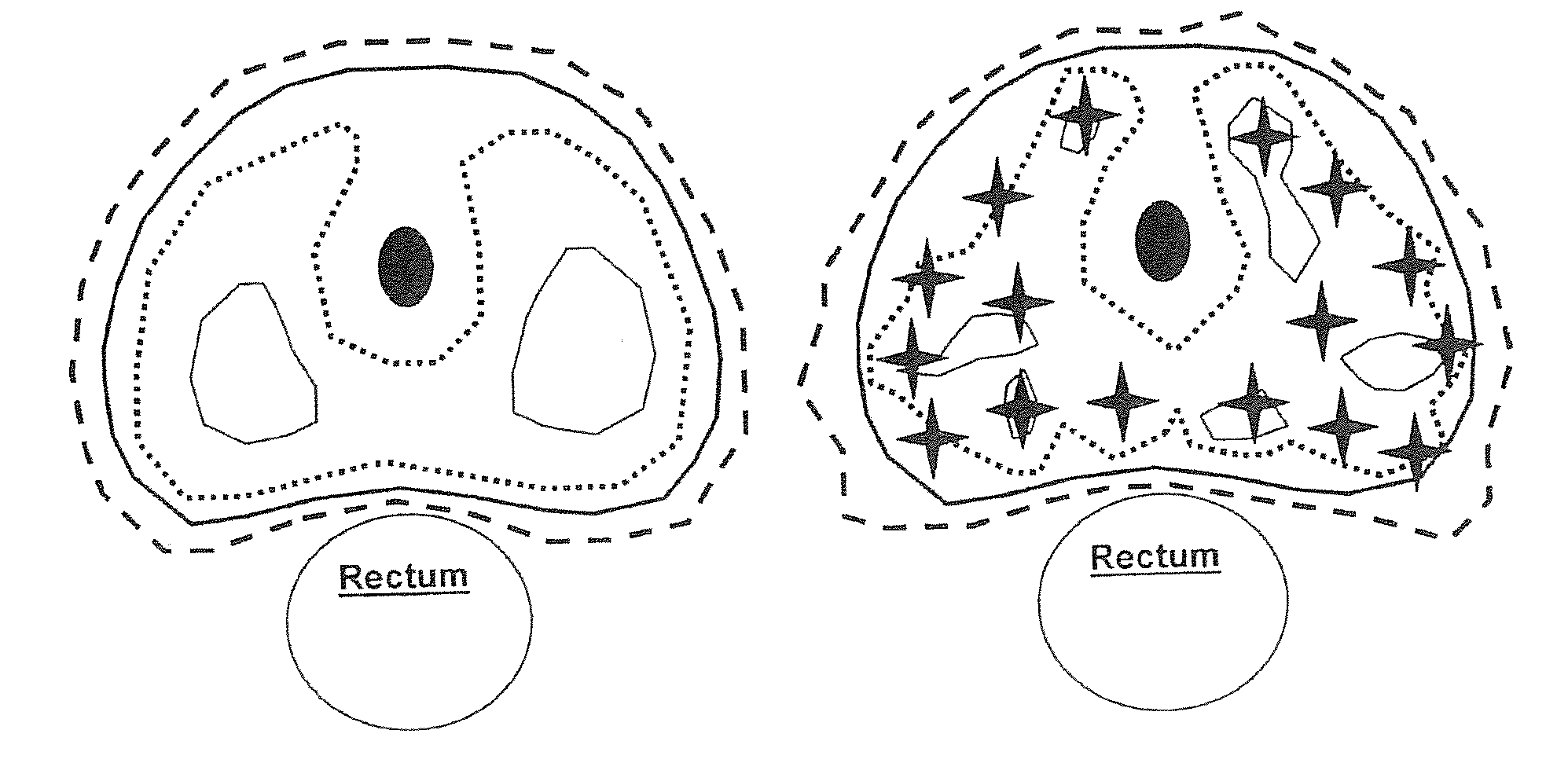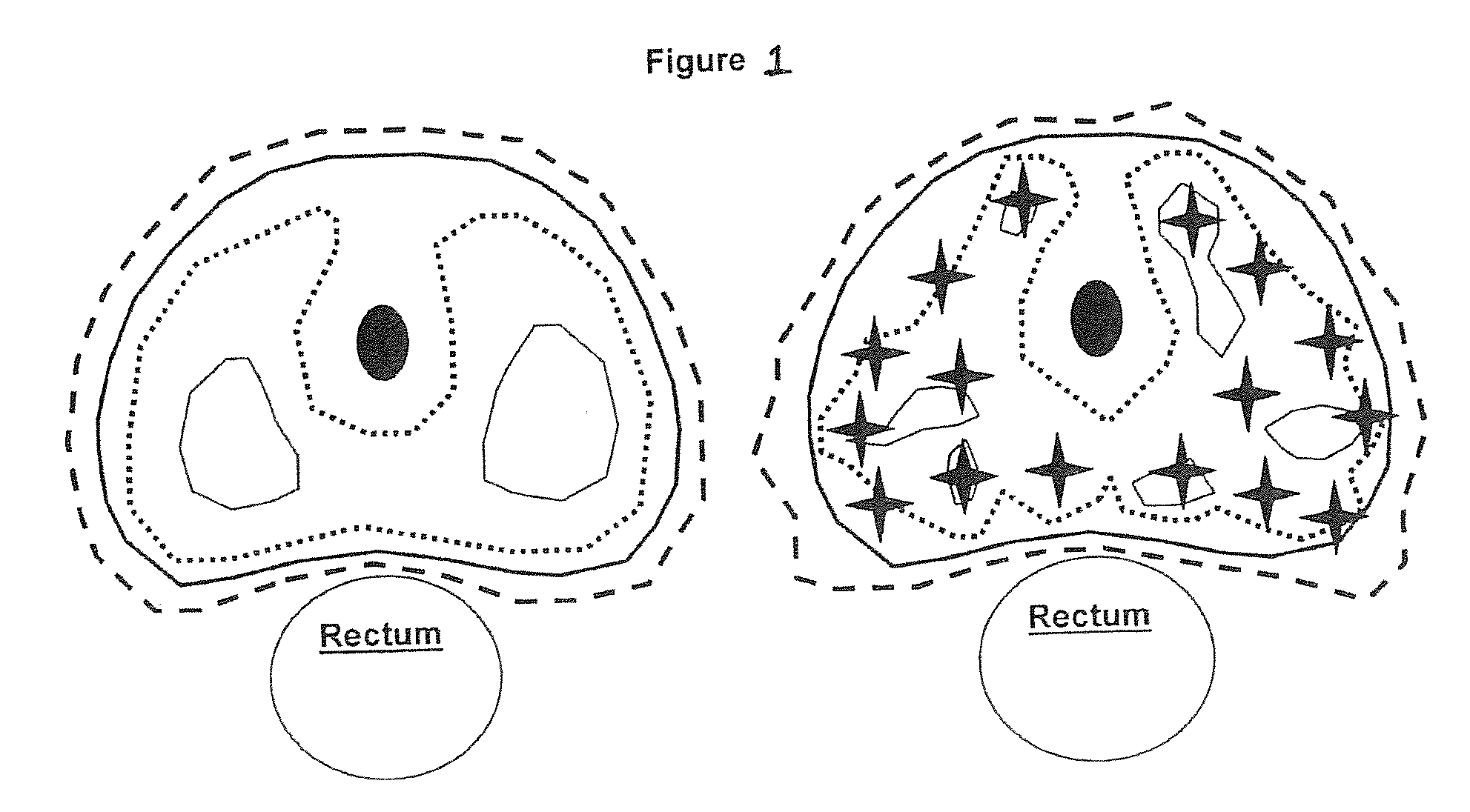Methods for performing radiosurgery using non-homogeneous stereotactic techniques
a radiosurgery and stereotactic technology, applied in radiation therapy, therapy, etc., can solve the problems of homogeneous treatment of irradiation target area, damage to normal structures (such as nerves or sensitive areas of the brain) within the targeted volume, etc., to minimize damage to non-targeted healthy tissues and minimize damage to surrounding healthy tissues.
- Summary
- Abstract
- Description
- Claims
- Application Information
AI Technical Summary
Benefits of technology
Problems solved by technology
Method used
Image
Examples
example
Peripheral Zone Dose Escalated CyberKnife Prostate Radiosurgery: Dosimetry Comparison with HDR
[0040]Based on successful treatment of prostate cancer with High Dose Rate (HDR) brachytherapy monotherapy, a CyberKnife (CK) IRB-approved protocol (“protocol CK”) was followed, using reported HDR fractionation (38 Gy / 4 fx), deliberately escalating peripheral zone dose. In this study the protocol CK was studied versus the present invention, simulated HDR, for identical prostate volumes in a series of patients, comparing dosimetric endpoints and clinical observations.
[0041]Nine consecutive patients treated with CK from July-November 2006 are studied; 8 receiving protocol CK monotherapy and 1 receiving a CK boost. All were normalized to the CK monotherapy protocol dose (38 Gy / 4 fx). Minimum CK PTV V100 requirement was 95%. CK dose constraints: PTV—200% (76 Gy); rectal wall—100% (38 Gy); rectal mucosa (3 mm rectal wall contraction)—75% (28.5 Gy); urethra—120% (45.6 Gy); bladder—120% (45.6 Gy);...
PUM
 Login to view more
Login to view more Abstract
Description
Claims
Application Information
 Login to view more
Login to view more - R&D Engineer
- R&D Manager
- IP Professional
- Industry Leading Data Capabilities
- Powerful AI technology
- Patent DNA Extraction
Browse by: Latest US Patents, China's latest patents, Technical Efficacy Thesaurus, Application Domain, Technology Topic.
© 2024 PatSnap. All rights reserved.Legal|Privacy policy|Modern Slavery Act Transparency Statement|Sitemap


